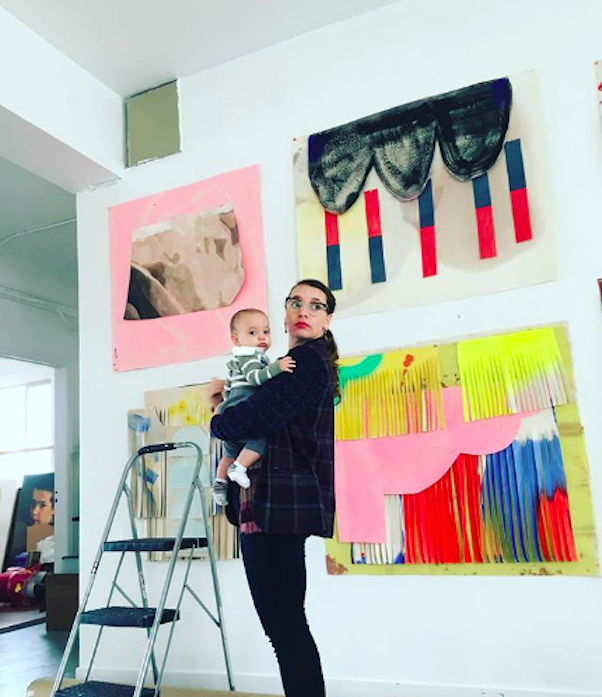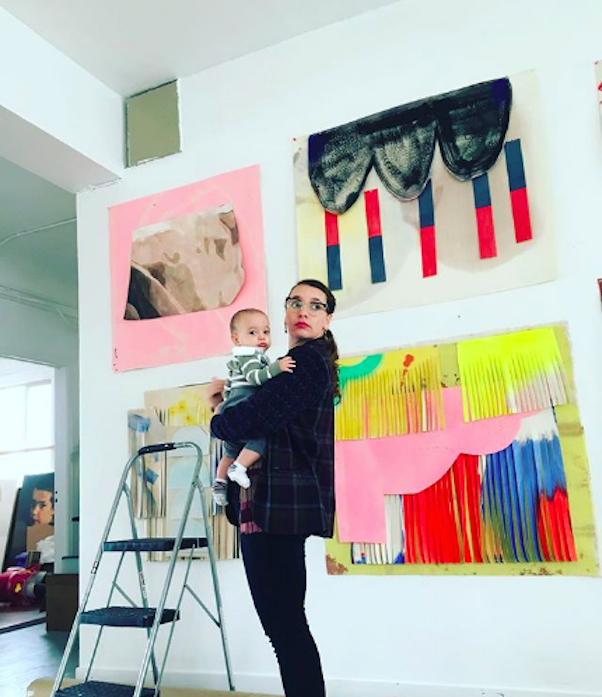
Until recently, taking trips with the kids to museums was a regular weekend activity. Now that the museums are closed, and honestly we don’t feel comfortable venturing out, I began to think about how we can get our kids to engage with art.
It is important to keep kids interested in art even with less access. According to the Denver Art Museum, kids benefit from “experiencing the work of other artists—the importance of focus, experimentation, taking risks, and making mistakes.” It also fosters their creativity and they learn about cultures from around the world. Art helps kids express their emotions which is particularly important in today’s world with so much stress that might not have affected them before.
Taking inspiration and advice from Tam Gryn put me on the right track. She is a mom and an art curator who spent a lot of time traveling the world, living in NYC, and now calls Miami her home with her husband and two small children. Tam began her art career with the Artist Pension Trust and had several other impressive positions with different galleries and art fairs. She is currently the Head Curator at Showfields, a unique shopping and art experience retailer.
So, how to keep the kids interested in art and in making their own? Tam gave me great suggestions.
1. START THEM YOUNG—VERY YOUNG
Tam explained that when she was pregnant with her son, she was an independent art curator in NYC. With her pregnant belly, she knocked on gallery doors asking if there was availability on the calendar for a radical art exhibition. The Radiator Gallery picked up the show “Conceived Without Sin,” an ironic title given her pregnant state. When the opening day arrived, her then three-month-old son was in attendance. She explained, “My artist friends were supportive. We took turns to carry, feed, and play with my baby while the exhibition was being installed. I believe that exposing children to art when they are tiny gets them to believe that art is a part of everyday life and activities.”
2. TURN ART INTO A STORY
Online art tours at museums, public outdoor art installations, and many great books for adults and kids are engaging. Tam recommends that even if your children are young, a good way to introduce them to artists is through stories and anecdotes about the art, the artists, the space, and the context around them. Since kids love to run around and can sometimes be loud, public outdoor art exhibits are a safe and entertaining way to give children exposure without fighting with them to behave. Most museums offer family days or family programs online including kid-friendly arts and crafts, book readings, and other stimulating activities that are fun and educational.
3. WATCH YOUR KIDS EXPERIENCE ART & YOU’LL LEARN TOO
Tam told me that observing her kids experience art inspired her to make one of her boldest career moves. She explained that because kids discover the world through their multiple senses, it’s counter-intuitive to tell them “Don’t touch!” That is when she realized that most art was exhibited in a way that felt unnatural. Exhibitions are usually restricting and intimidating and are meant to be seen with your hands behind your back. This understanding led Tam to start commissioning artists to create interactive art.
Interactive art is meant to stimulate the 16 additional human senses including: hearing, touch, taste, smell, pressure, itch temperature, pain, thirst, hunger, direction, time, muscle tension, proprioception, equilibrioception, and extrasensory perception. Interactive art is inclusive for children and offers adults the instinctive childhood experience of exploring beyond their visual senses. Experiencing art using your entire body leaves you no choice but to connect, especially in a world filled with technology and 2D imagery.
You probably have interactive art at home. One day, Tam’s kids were playing with Mister Potato Head and her 3-year-old said, “He is like Picasso!” Kids interpret what they experience to their everyday lives and it becomes a part of how they see the world.
4. ASK YOUR KIDS WHAT THEY THINK
When looking at art, let your children explore and seek out what they want to see first. Tam says that at home, she tries to steer them towards specific books that she knows will stimulate them more than others. If you are looking for a way to have your children express their emotions in a constructive way, which can often be extremely challenging, see what they are drawn to and ask them questions.
Once, Tam and her daughter encountered a piece that was made with broken glass and other found objects. Her daughter asked why the piece was broken. Tam explained that the artist was probably angry and had broken objects to create something beautiful, and that is art. Her daughter was happy to hear this, and it seemed like she identified with those feelings. That moment might not have happened had Tam not allowed her daughter to seek out the piece and then start talking about it.
5. APPRECIATING ART AT HOME
One of Tam’s favorite summertime activities with her kids is inspired by the established artist Carlos Cruz Diez and his color studies. A great activity to do outdoors is to use food coloring, water, and droppers in different bowls. Kids can learn about primary colors and by mixing them, they can find out which secondary colors are created. The kids entertain themselves for hours, playing with the water and their toys.
While we navigate the summer with our children, exploring new forms of art is a positive way to spend the day, will inspire your children to be creative, and may even offer them a way to express some of their frustrations and emotions and turn it into something beautiful.
